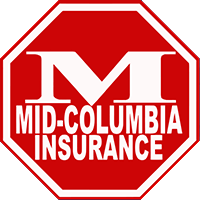Best SR 22 Insurance
Monroe Washington
Owner & Non-Owner SR22s

What is Non-Owner SR22 insurance?
In Washington state we have a broad form policy that is a better option for those needing a stand-alone SR22 policy than a non-owned policy because non-owned policies don’t cover many borrowed vehicles but a broad form policy will. So, if you don’t want to lose your primary insurance provider due to your SR22 requirement, buying a separate broad form SR22 policy to handle the SR22 requirement may be a smart move.
What’s the difference between SR22 and regular insurance?
Where do you get SR22 insurance?
Some preferred insurance carriers, if you inform them you need an SR22, might at renewal raise your rates significantly or cancel your policy. If you don’t want to jeopardize your existing coverage, talk to us about a Broad Form SR22 policy. It can be very inexpensive and should allow you to keep your preferred rates.
How long is an SR22 insurance form required?
Be sure not to cancel your SR22 before the requirement is lifted since your insurer is required to inform the DOL that you no longer have an SR22 and your license could be suspended or revoked again. A simple call to the DOL is usually all that is required to find out how long you will need to carry the SR22.
Do I need SR22 and regular insurance?
What happens if I am late paying my SR22 insurance?
Late payment frustrations can be huge. Multiple calls to the DOL and your insurance company, proving to the DOL you have coverage, and trying to get avoidable DOL fees removed just because you got behind on your car insurance premiums.
Why is an SR22 insurance filing required?
- Driving under the influence (DUI) (aka driving while intoxicated (DWI)) or other alcohol related violations
- Serious traffic offense convictions, such as reckless or negligent driving
- Several traffic offenses in a short time period
- Driving with a suspended license
- At-Fault accident while driving without insurance, and even
- Driving without insurance in Oregon (even though you live in Washington)
The SR-22 requirement just means that proof of insurance has to be sent to the state and is one step towards getting your license reinstated and getting you back on the road.
What if I need an SR22 in one state but live in another state?
What happens if my SR22 insurance cancels?
When your SR22 policy cancels or lapses, your insurance company is legally required to send an SR-26 form to the state to let them know that your policy is no longer active. If not handled promptly, the state will re-suspend your driver’s license and you will need to jump through all the hoops and pay all the fees required to reinstate your license once again.
What is an SR22 insurance policy?
Although referred to as “SR-22 insurance,” An SR-22 is not actually insurance but instead is simply an endorsement to regular insurance policy. This endorsement is filed with the state as proof that you have insurance. The SR22 notifies the state that you have insurance in force and promises to notify them if your policy cancels.
Can I get SR22 insurance without a car?
A broad form policy is a smart choice for someone who does not own a car but needs an SR22 and wants to be able to drive. Once you get a car you can either get a policy on that car or keep your broad form policy since it covers owned and non-owned vehicles.
How much does SR22 insurance cost a month?
This is why it is important to work with an independent agency like Mid-Columbia Insurance that partners with multiple companies to be sure you are getting more than one option to choose from.
I don’t own a car, do I still need to file an SR22?
If you don’t own a car and need an SR22, no problem. Washington drivers are eligible for a Broad Form insurance policy that provides coverage for any car you drive for personal use — owned or non-owned. We are the Broad Form SR22 Insurance experts.
Top Things to See Around Monroe
Just the Facts about Monroe
Monroe is a city in Snohomish County, Washington, United States. It is located at the confluence of the Skykomish, Snohomish, and Snoqualmie rivers in the Cascade foothills, about 30 miles (48 km) northeast of Seattle. Monroe’s population was 17,304 as of the 2010 census and was estimated to be 19,776 in 2019.
Monroe was originally founded in 1864 as the town of Park Place, located at the river confluence among several existing settlements in the Tulaco Valley. The townsite was in the past a trading read out used by the original Skykomish people. Park Place was renamed to Monroe in 1890 to tribute U.S. President James Monroe, and was moved northeast to be close the tracks of the Great Northern Railway, which was constructed in 1892. Monroe was incorporated in 1902 and was fixed as the house of a major edited milk tree-plant and the give leave to enter reformatory.
Monroe became a suburban bedroom community in the late 20th century, serving commuters to Everett, Seattle, and the Eastside. It is home to the Monroe Correctional Complex, which absorbed the native reformatory in 1998, and the Evergreen State Fair, which runs annually in late summer. The city is located at the junction of two highways, U.S. Route 2 and State Route 522, which were expanded in the late 20th century to help commuters.
The confluence of the Skykomish and Snoqualmie rivers had originally belonged to the indigenous Skykomish tribe, who predominantly occupied the area between modern-day Monroe and Index. The confluence itself was known as Tualco (Lushootseed: squa’lxo), and a user-friendly Skykomish village named S’dodohobc acted as a trade post together with several Coast Salish groups. A separate settlement near modern-day Monroe was used by the S’dodohobc band of the Snohomish people. The land almost the confluence was cleared into a prairie and used to cultivate berries, hazelnuts, and supplementary plants. The Skykomish were among the tribes to sign the Treaty of Point Elliott in 1855, effectively ceding their standard territories, including the Tulaco and confluence areas.
The area around modern-day Monroe was surveyed by George B. McClellan and the U.S. Army Corps of Engineers during their expedition to find a adequate pass for a railroad across the Cascade Mountains. The Treaty of Point Elliott was not fully ratified until 1859, but the first American settlers had already arrived and claimed squatters rights to homestead in the Skykomish Valley. Robert Smallman, an English immigrant, arrived in 1855 and was the first to homestead on the land roughly speaking modern-day Monroe. He was followed by Henry McClurg, an appointed county commissioner, who arranged in the Place with his wife Martha in 1860. McClurg higher founded the settlement of Park area in 1864, on a site one mile (1.6 km) west of modern-day downtown Monroe. Two other settlers arrived in 1860: Salem Woods, who claimed a small prairie to the northeast of Tualco and was well ahead elected county sheriff; and Charles Harriman, a territorial legislator who arranged in Park Place.
Source: Monroe, Washington in Wikipedia


